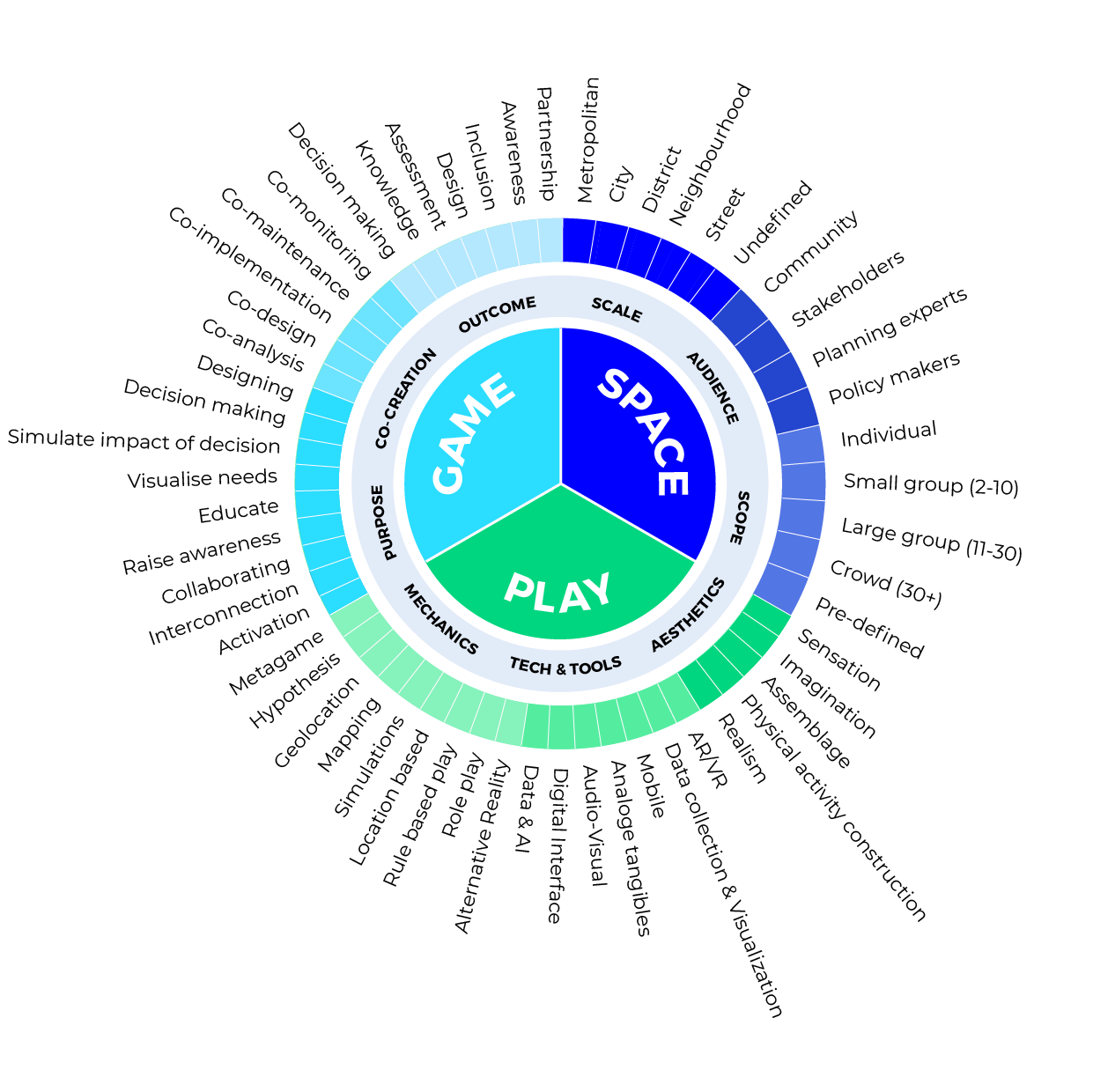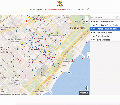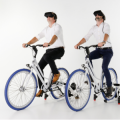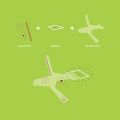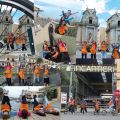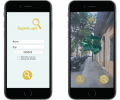Welcome to the Public Play Space Community Platform
Public Play Space (PPS) is a project co-funded by the Creative Europe Programme of the European Union and developed by IAAC, BUas, and CLAC. It promotes innovative and creative practices for the co-design of inclusive, cohesive, and sustainable public spaces, through the use of games and digital technologies, in a transnational and European perspective, fostering the process of placemaking.
The objective of this PPS Wiki Community Platform is to create a knowledge community on the use of digital technologies and games to enhance participatory processes for urban design and placemaking, allowing a wider dissemination of the best practices in this field and to facilitate knowledge sharing and the interaction among key stakeholders.
The first 30 projects uploaded in this PPS Community Platform are the result of an Open Call of Public Play Space Initiatives launched in December 2019 and from a competitive desk review selection. The categories for these projects are described in the
Methodological Notes | |
| The projects are analysed and described using an innovative framework, articulated into 3 concentric levels of analysis and categorisation. This analytical approach allows a deeper understanding of projects that shows a high level of complexity and sophistication, enabling the reader to extract learnings on the different impacts and strategies.
At the same time, this categorization will enable the reader to navigate the project according to different features, actions, and properties that characterize them. The first level of analysis describes each project based on the three categories of Space, Game, and Play.
| |
After opening the discussion with these interesting cases, we invite you all to send us your project and initiative and to join our Public Play Space Community!
All Projects
AR:ticipate 1,439 × 889
AudiovisualArchive and EmotionalMap 600 × 525
Back Story 355 × 355
Being There 593 × 333
Cinema Lliure 1,024 × 683
Clean Games 1,280 × 850
Climate game 1,920 × 1,040
Co-Design for Co-Habitation 4,032 × 2,268
- CO-MIDA
CO-MIDA File missing
Collective intelligence in city design 1,200 × 670
Col·lectiu Superilla Poblenou 1,424 × 2,015
Contrainer with an R 1,439 × 889
Corporate growth game 794 × 447
CREDO 655 × 452
CycleSPEX 300 × 300
Djs pel Canvi 1,200 × 760
From Smart Games to Smart City Planning 1,920 × 1,080
G.E.A.R - enjoy the unseen 1,439 × 889
Generation Earth 4,032 × 3,024
Guerrilla Gardening Palermo 1,439 × 889
Guilt 4,272 × 2,848
Habla 768 × 512
Hello Lamp Post 2,667 × 1,667
IAM PANEL 1,920 × 1,080
Kreyon city 1,024 × 684
L'appar(ten)enza inganna 960 × 720
Le Fanu Play and Skate Park 1,500 × 800
Lumina Foresta 6,000 × 4,000
Make your Game 1,280 × 960
Mediterraneo Square 621 × 438
METROGAME 780 × 540
Mobility urban values 1,920 × 1,280
My Street ABC 1,500 × 1,061
Online / on-site 1,584 × 1,224
- Placemaking Facilitation Game
Placemaking Facilitation Game File missing
Placemaking through Gamification 1,730 × 1,080
- Play the Koepel
Play the Koepel File missing
Playtime 2,156 × 2,156
PobleJoc 730 × 486
QurbanCraft 3,509 × 2,481
Raiders of the lost water 1,000 × 1,000
RE:CLAIM 400 × 300
Redesire 1,200 × 709
Rethinking Urban Design in the digital era 1,783 × 1,261
Saint Rosalia Gardners 1,075 × 802
STAIN 480 × 300
State of the Art Catalogue 2,000 × 1,097
Superlupa 768 × 638
- The Bike pitstop
The Bike pitstop File missing
The civic horse 960 × 1,326
The great palermo 1,024 × 768
The innovation game 4,608 × 2,240
The Smart City Hospitality 274 × 246
The Urban Future 1,065 × 529
Un sacco di Palermo 3,984 × 2,656
Urban Living Lab Playground Game 2,048 × 1,367
Urban Poem 2,576 × 1,932
VEUS 730 × 496
Videogame urbanism 1,920 × 1,080
Methodological Notes | |
| The projects are analysed and described using an innovative framework, articulated into 3 concentric levels of analysis and categorisation. This analytical approach allows a deeper understanding of projects that shows a high level of complexity and sophistication, enabling the reader to extract learnings on the different impacts and strategies.
At the same time, this categorization will enable the reader to navigate the project according to different features, actions, and properties that characterize them. The first level of analysis describes each project based on the three categories of Space, Game, and Play.
| |

